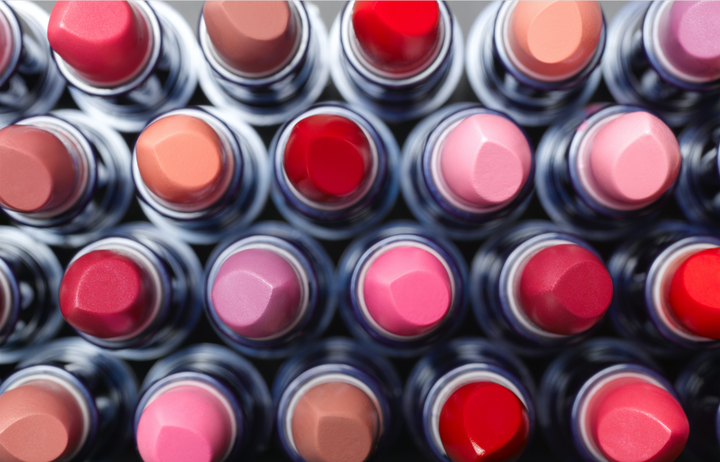For Allure, by Macaela Mackenzie.

It’s not often the the science behind beauty products is revealed. Enter The Scientific Mom, who put her lipstick under a microscope to take an in-depth look at what was really going on. We talk all day long about the beauty benefits of innovations in the lab—from reformulated shampoos for your scalp, to Technicolor blonde techniques, to new school face-lifts, and facial oils that spent five years in the lab before hitting shelves—but rarely do we get to see it in action.
Amy Oyler, a science teacher in Arizona and the blogger behind The Scientific Mom, put some of her favorite lipsticks on slides for an at-home experiment with her daughter to see the difference between gloss, sparkle silky, and matte formulas. The resulting looks are even prettier than what the lipsticks look like IRL—under the microscope, crystals and pretty pigments come to life in a kaleidoscope of colors. "As with many of the explorations in science that my daughter and I embark on, this became quite the adventure in learning and discovery,” Oyler shared in an interview with Bustle. “Soon, we were diving deep in the chemistry of makeup, the bonding of atoms through electrons, the physics of light, and how this all interacts with the makeup and colors we love to wear. It truly became a blend of art, science, and the thrill of discovery while learning about the makeup we love to use.”

Their findings were pretty cool. For example, “pink” lipstick is actually made of dozens of different shades of pigment—pinks, purples, reds, even blues and greens—blended by a cosmetic chemist to give the shade a truly unique hue; pearly glosses like Benefit Ultra Plush Lip Gloss in Dandelion are actually full of teeny, rainbow-colored crystals (a mineral called “bismuth” in the lab) that give the gloss its shine; and matte lipsticks look just as different when you peer into their chemical structure as they do on your lips. Under the microscope, matte formulas appear to have thick “bands” between clusters of pigment, while silky formulas look wet and uniform, since they’re held together more tightly with shiny oils and waxes, says Oyler.
Next up, more makeup experimentation! Olyer says now that she's put lipstick under a microscope, she’ll be exploring all corners of her makeup bag—from shadows to highlighters in the name of pretty scientific discovery. “It's been a wonderful way to share the beauty of science, and show that science can be found in just about every corner,” she said. “Even in your lipstick drawer.”
More from Allure:
